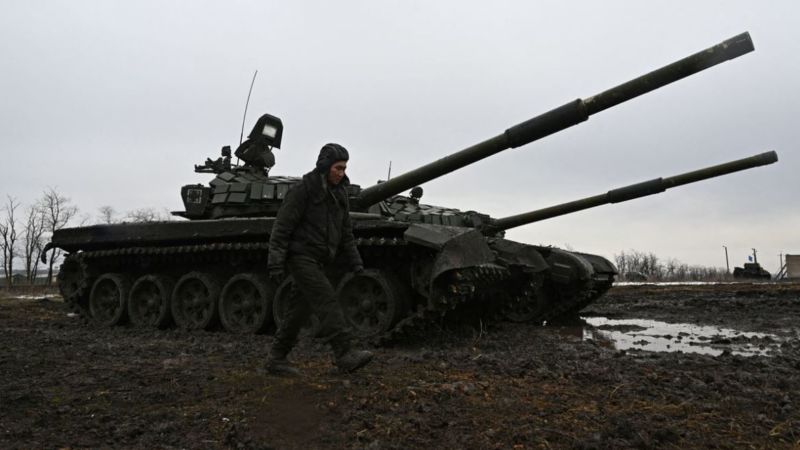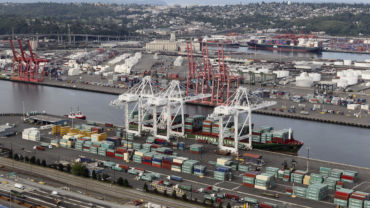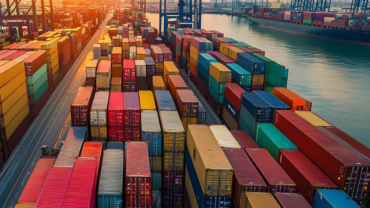As the war in Ukraine continues, how can companies adapt to an evolving regime of sanctions against Russia and its leadership?
The unprovoked Russian invasion of the Ukraine has been met by a significant response from Western lawmakers and regulators intent on punishing Russia for its unilateral aggression. In a coordinated effort undertaken mainly by the US, the UK, and the European Union, sanctions have been introduced against Russian individuals, companies, entire industry sectors, and the trade of certain goods.
These multilateral sanctions campaign took less than a month to develop and has been more complex and profound than similar campaigns that have been implemented against countries such as Syria, Iran, North Korea, or Venezuela. These restrictions seem to have been put in place in a well-coordinated manner, particularly in regard to the vast number of export restrictions on technology goods and services, as recently documented by the Atlantic Council.
As the war continues, almost every week a tightening of the international sanctions regime is announced as new measures and restrictions are introduced. The International Working Group on Russian Sanctions, for example, has outlined a variety of measures and provided guidance and research on how to improve their effectiveness and deterrence. It is not a surprise then — in a move that confirms the US government’s understanding of the effectiveness of the current measures — that on April 20, it included in its sanctions campaign penalties against facilitators of those seeking to evade sanctions. With these new sanctions, the US government is targeting those financial and operational support networks that have been put in place with the purpose of circumventing any primary blocking mechanism by Western countries. Just two weeks later, the EU Commission said it too would introduce similar legislation to target facilitator networks.
While these new sanctions against facilitators are still defined as a primary blocking mechanism, they nevertheless have a much more dynamic deterrence component: it is expected that the US Treasury will expand the number of entities whenever it is made aware of or has information that such facilitator networks exist.
Indeed, there are literally thousands of companies that have been formed with the purpose to circumvent sanctions and restrictive measures. For example, more than 10 years ago, Thomson Reuters conducted a research study on the sanctions program against Syrian war criminals and found that 24 Syrian sanctioned entities were connected to more than 1,000 entities across five jurisdictions, with a vast number of those entities being located in Cyprus.
The use of shell companies (due to their ease of formation) in certain jurisdictions and tax havens around the world is by far the most common technique and method of sanctions evasion, and one reason why the US has moved to target facilitator networks.
The Russian sanctions campaign is much larger in scope than anything that has been put in place before; hence, the potential for facilitator networks to be active is very large. In addition, because the Treasury’s Office of Foreign Assets Control (OFAC) considers entities blocked that are owned individually or in aggregate by a blocked person (50% rule), beneficial ownership information, particularly when gathered from jurisdictions outside of the US, can play a critical role.
As a result of the current sanctions environment and the elevated importance of efforts to combat corruption and money laundering since the beginning of 2021, market participants (companies and financial institutions) are in a reactive mode. They need to take ample measures to comply with new mandates and need to ensure that their compliance frameworks are robust enough to meet future regulations that are certain to come. This includes the discovery and reporting of sanctions evasion activities to corresponding financial intelligence units and law enforcement.
Market participants have a couple of possibilities for adapting their compliance and risk management programs to this new reality.
Implementing a data-driven compliance program
Three components can be used to minimize facilitator network sanctions evasions and thus ensure compliance. The first is the availability of continuously updated sanctions and blocked entity lists; the second is the enhancement of such lists with an adverse media capability; and the third is the additional use of global beneficial ownership information.
One of the challenges for compliance executives has been that the above-mentioned sources tend to be used in isolation — for example, using various heterogeneous data sources that are not connected to each other. The use of these three components separately may provide some insight, but since names need to be run individually, often through a manual process, such use is time- and resource-consuming as well as ineffective. For larger organizations that need to screen thousands of customers, it can be difficult to obtain a singular view on any one entity.
In contrast, being able to use these three data components in combination allows for the generation of unparalleled insight; and, at the same time, provides significant time-savings on the actual conducting of due diligence, which is often a cumbersome and time-consuming process. The combination of these data sources will also ensure that information previously hidden is uncovered and can be assessed through either sanctions or adverse media information.
For example, when Russian oligarch Alisher Usmanov was sanctioned by US and European authorities, it was difficult to freeze his vast fortune because his business conglomerate is held by dozens of offshore entities, as reported by the Organized Crime and Corruption Reporting Project. Usmanov alone owns a 49% stake in his main steel company, Metalloinvest. His yacht Dilbar, for example, is owned by Navis Marine Ltd. in the Cayman Islands, which in turn is owned by the Cyprus-based firm Almenor Holdings Ltd, which again in turn is owned by Swiss-based Pomerol Capital.
Screening these names only against a sanctions list would not reveal any significant findings. But when combined with additional sources such as an adverse media capability or a beneficial ownership registry, Usmanov’s evasion network would be uncovered much easier. In this case, research and investigative media organizations provide this insight. (The owner of the yacht Dilbar was ultimately discovered to be Usmanov’s sister, Gulbakhor Ismailova. The yacht was sanctioned by EU and UK authorities in April of this year, from the moment this information became public knowledge.)
Sanctions that target facilitator networks therefore rely to a large extent on external market participants and investigators, who have the resources to conduct due diligence and who are able to share this information with lawmakers. Also, market participants can play their part to increase the effectiveness of sanctions against facilitators by submitting designated Suspicious Activity Reports (SARs) to authorities.
It will be to everyone’s benefit when this information is shared and acted upon, making the current sanctions campaign against facilitator networks more effective.







